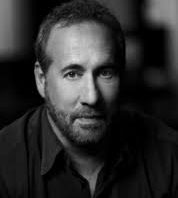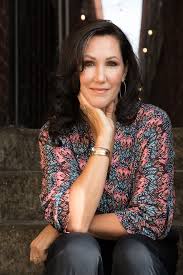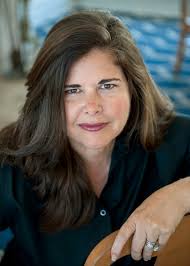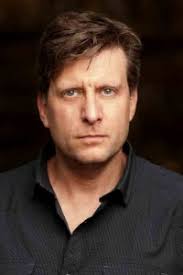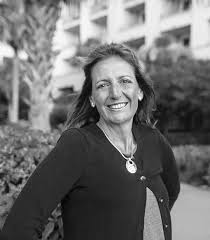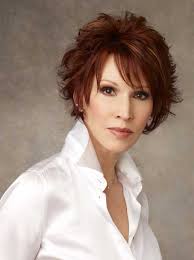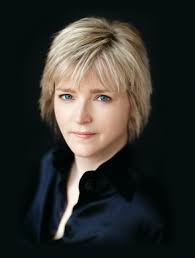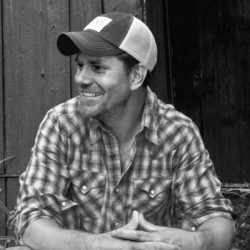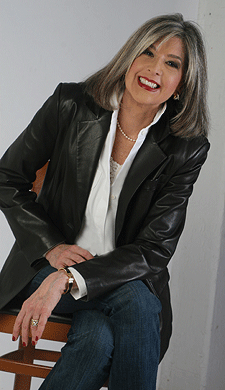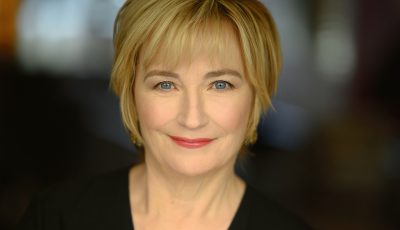

When Life Imitates Art by Kate White
When Life Imitates Art—and Creepy, Scary Stories Come True
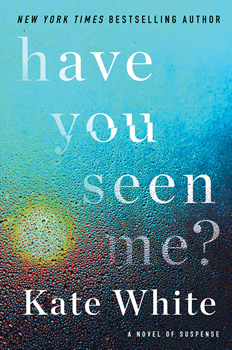 By Kate White
By Kate White
Something seemed odd to me the moment I stepped through the doorway and started down the long front hallway of the apartment. By the time I reached the living room, the hairs on the back on my neck were standing at attention. This wasn’t just odd, it was weird.
“You like it so far?” my real estate agent asked, misunderstanding the expression on my face.
Actually, I did like the apartment. My husband and I had been looking for a new spot to live in Manhattan for months, and this place was the first one I felt an immediate, unequivocal attraction to.
But that wasn’t the only reason my heart was skipping a little. Though I’d never seen a place exactly like this, it bore a stark and eerie resemblance to the apartment I’d created for the main character in the psychological suspense I’d just turned in to my editor, HAVE YOU SEEN ME?
And that resemblance only intensified as we followed the seller’s agent through the rest of the apartment. There was the open kitchen, dining, and living area, just as I’d described, the floor to ceiling windows, the view of midtown, and the long hall to the bedroom. Plus, the building was in the same exact area my protagonist lived in.
Things got really spooky, though, as we stepped into the bedroom. When I’d started my thriller, I decided I wanted my protagonist, a married personal finance writer named Ally Linden, to have a small home office, but since she and her husband were in their thirties, it seemed too extravagant for them to own a multi-bedroom apartment in Manhattan. So I gave Ally’s master bedroom an alcove that she could use as a work space. That was sheer poetic license on my part because modern New York high-rise apartments tend to be pretty formulaic, and in all my years in Manhattan I’d seen bedroom alcoves only in apartments that were in pre-war buildings. The place we were viewing had an alcove only because the previous owner had totally redesigned the space.
Well, we ended up buying the apartment. And so instead of me borrowing from my own life to create the scenes I wrote—which authors of course do on a regular basis—my own life seemed to be borrowing from the pages of my book. Life imitating art rather than the other way around.
How had this quirky thing happened?
In his famous essay “The Decay of the Dying,” Oscar Wilde theorized that “Life imitates Art far more than Art imitates Life.” He argued that what’s found in life and nature is not what’s really there, but rather what artists have taught people to find there through art. As an example, he offered London fog. No one, he said, noticed the beauty and wonder of the fog until poets and painters showed how lovely it was. “Those qualities did not exist,” Wilde wrote, “till Art had invented them.”
As I mulled over my situation, I began to realize that it really was a case of life imitating art. When I first started HAVE YOU SEEN ME?, I described to my husband the apartment my protagonist was going to live in and how I’d been inspired by some cool modern apartments we’d recently been guests in, as well as some I’d researched. This type of living was a real contrast to the 1890s brownstone we owned. A few months later, he suddenly suggested we accelerate our long-term plan to move, in part inspired by my talk about the book. We ended up drawn to the type of apartment I’d described to him. Though the fact that we found one with a bedroom alcove still seems kind of bizarre to me.
I was curious to see if other authors had ever seen their pages come to life. I discovered a bunch of chilling examples, some not as easily explained as my apartment experience. Imagine if you will….
My first novel, The Moscow Club, was about a coup in the Kremlin against Gorbachev. It came out in February ’91 and one of the reviews dinged it for being too “far-fetched.” Six months later there was a coup in the Kremlin against Gorby. So there. Good Morning America had me on and asked me if I had inside information!
I use a lot of real-life experiences in my books, so it’s not often it happens the other way around, but I did once meet one of my fictional villains at a party. Same name, same physical description, his voice and accent the way I heard it in my head. Even his profession was similar enough to really creep me out. I spent the rest of the evening giving him the side-eye.
In Crazy Love You, there was a baby named Ellie. Her story has a dark trajectory— to put it mildly. Before the book went to press, my friend had a baby and named her Ellie. Luckily, I was able to catch the book and change the name to Ella before it published!
In one of my medical thrillers, I wrote about a doctor who hired a biker gang as hit men and in exchange they got opioids to resell from his illegal narcotics sales operation. Pretty outlandish, I thought…until news broke out of New Jersey (everything happens in Jersey) that Dr. James Kauffman had been working with the Pagan Outlaw Motorcycle Gang to illegally distribute opioid pills and he had the biker gang kill his wife after she threatened to expose his drug operation.
You can’t make this stuff up—or can you?
I wrote Hello, It’s Me in 2003 under my Wendy Markham pseudonym. It’s about a woman who keeps calling her late husband’s cell phone to hear his voice on the recorded message—and the twist is that one day, he answers. It was my mom’s favorite book of mine and she kept saying that this one would make a great movie.
Tragically, by the time it was published in March 2005, she’d been diagnosed with terminal breast cancer, and we lost her May 11th. I found myself doing just what the heroine did, needing to hear my mom’s recorded voice. Only in real life, she didn’t answer…or did she? She’d been so young and her death an unexpected family tragedy. But she seems to have a hand in my daily life, so similar to what my heroine experiences in Hello, It’s Me: the book was suddenly, inexplicably green-lit for production by the network after having been optioned and endlessly pitched to them for many years—and was rushed into shooting that began two weeks later, on May 11th—the tenth anniversary of my mom’s death.
It was my only book, after publishing 90 over almost three decades, that ever became a movie, as my mom thought it should and predicted it would, and when I visited the set, I truly could feel her there.
I had written The Witness, and it was about to be published. The story is about a separatist/militia-type group, who commit acts of violence against people they don’t like. I called the group The Brotherhood. The members are bigots, not only racially. They hate everybody who isn’t “them.”
A few months before my pub date, the Murrah Building in OKC was bombed on April 19, 1995—by a group eerily similar to The Brotherhood. The more I learned about McVeigh and the Nichols brothers, the stranger the coincidence became. My editor called me and hesitantly asked if I had noticed this similarity, asked if I was psychic, etc. Although my fictitious group didn’t bomb anything, there was enough of a parallel to be disconcerting. It was as though I had foretold it. Creepy.
This event had significance in another way. Both my children were attending the University of Oklahoma. The campus is in Norman, 25 miles from the city, but my daughter was in Oklahoma City, taking classes at the Health Sciences Center, six blocks from Murrah, when the bombs went off. It rocked her world, literally. Of course, my husband and I were at home in Texas, seeing the news stories, and anguishing until we had heard from her. She graduated less than a month later on May 5th. As you can imagine, the bombing had such a devastating impact on so many people in the area that the commencement was a very somber affair. My daughter’s college had a separate ceremony in First Methodist Church in downtown OKC. It had sustained damage in the blast.
The entire episode was a little too close to home.
After I’d written my book The Night Before, a book about deception in internet dating, I went on a few dates with a man I met on Bumble. We didn’t really hit it off and that was that. But then one day I saw him walking down the street with a woman. I was about to say hello, because that seemed the polite thing to do, but he waved me off with his hand at his side. His eyes were wide and his face replete with fear. I knew right then that I had not heeded my own research from writing The Night Before. After further investigating, I learned the truth—the man was not single after all!
In my first book, Blindsighted, my character Sara has a patient she diagnoses with leukemia. Then I got a publishing contract. Then a close friend was diagnosed with leukemia, which was the worst kind of research ever. This happened in subsequent books—in my Will Trent series, a character’s father died of pancreatic cancer. Then a friend’s brother died of pancreatic cancer. Then there was lung cancer, heart attacks (twice) and an adult being diagnosed with Type I diabetes (adults in their 20s and 30s receive the diagnosis almost as often as children, but STILL).
The most awful one was when I wrote about glioblastoma, which is a terrible, terrible way to die. Fast forward one year later, and my beloved accountant, a WWII vet who wasn’t going to retire until he reached the age of 95, was diagnosed with it. Now that I am looking at all of this, I’m not sure why anyone wants to be my friend.
While I was finishing up my 2017 novel, The Names of Dead Girls, my editor asked me to write an Author’s Note about my influences for my Canaan Crime Series set in northern Vermont.
So I sat down to write that in the previous 10 years, several very violent and especially cruel murders had taken place in Vermont—one involving a young teacher in the Northeast Kingdom [the northeast section of Vermont] who was sexually assaulted and murdered by a couple she knew and trusted, all while the couple was aware that her toddler was in her car just several feet away.
The Kingdom is a rural, bucolic, and normally peaceful and neighborly region, and such crimes are rare, so the atrocity of this and other violent crimes in recent years hit home to every citizen across my small state.
While writing the piece, I was thinking how grateful I was that no such murders had happened in or near my town, a couple hours south of the Kingdom, in nearly three decades. Also, while writing the piece, I noticed that every few minutes a state trooper cruiser would pass by my house. Then I noticed a couple uniformed officers in my neighbor’s yard, clearly searching for something or someone.
A few minutes later, I learned that a neighbor who resided less than a half mile away, an 81-year-old woman living alone, had been found murdered in her home. She’d been stabbed to death.
It shook my small town of roughly 2,000 people, especially since the perpetrator was at large for weeks and weeks. It turned out he was a member of the community who’d done it, a man she’d known and hired to do work around her place, a man I’d seen in the store and had generational roots in the town.
It was an awful coincidence that my neighbor was murdered so brutally and senselessly while I just happened to be writing about such rare but damaging and haunting crimes.
I wrote about DNA testing in You’ll Never Know, Dear. A little girl (and her doll) who went missing turn up 40 years later. The sister of the missing girl seeks proof that this really is her sister, so she has her own and her possible sister’s DNA analyzed. The results come back: they are half sisters. They have the same mother, but different fathers. Which leads to a series of discoveries that explain the little girl’s disappearance and puts both women’s lives in danger.
Months after the book was published, my best friend from elementary school called to tell me she and her two sisters had their DNA tested, only to discover that they all have different fathers. Of course, it’s a very different story, because my friend’s genetic father was a medical student who donated sperm to an early sperm bank. Back then, infertility was kept secret and no one told the kids. But it did explain why my friend and her sisters always felt and looked so profoundly different from one another, and why none of them remotely resemble the dad they grew up with.
In my thriller The Other Woman, I was trying to figure out a way there could be a series of murders that might or might not be the work of a serial killer. They had to be similar, eerily similar, but without any bizarre identifier or message that would brand them as obviously connected. I also wanted the deaths to be similar enough that the media might start asking questions about the possibility of a serial killer. And that the police, who wouldn’t know yet whether they were connected, might put off the reporters’ questions—and therefore sound like they were trying to avoid answering, which then would make the reporters even more certain that there was something sinister. So I decided on bodies being found in the early morning, on the wet ground next to a river, under a bridge, strangled, the bodies completely wet, not wearing shoes, and all with tattoos. So that could be a pattern. Or not. My fictional newspaper called the maybe-murderer “The Bridge Killer.”
After the book was written and in production, a body was found in the early morning under a bridge over the Charles River, completely wet, no shoes and with tattoos. I was really unsettled by it, but I figured, you know, coincidences happen. But then—it happened again. A different bridge, just like in the book, but exactly the same situation: river, strangled, wet, no shoes, tattoos. Very weird. But then—it happened again. Different bridge, but river, wet, no shoes, tattoos. I was completely disturbed by this—it was not something that had happened before. Or come to think of it, since.
Was there actually a Bridge Killer?
- LAST GIRL MISSING with K.L. Murphy - July 25, 2024
- CHILD OF DUST with Yigal Zur - July 25, 2024
- THE RAVENWOOD CONSPIRACY with Michael Siverling - July 19, 2024


